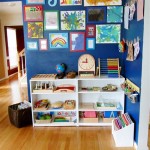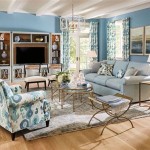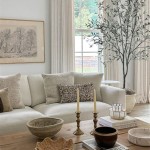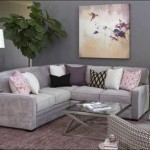Interior Decoration Room Dividers: Functionality and Aesthetics
Room dividers, also known as screens or partitions, serve as adaptable elements in interior decoration, offering solutions for space management, privacy enhancement, and aesthetic improvement. Their versatility allows for integration into diverse architectural layouts and design themes, making them applicable in residential, commercial, and even temporary settings.
The history of room dividers stretches back centuries, with early examples found in ancient China. These initial dividers, often crafted from materials like wood and silk, were intricate works of art, featuring elaborate carvings and paintings. Their function extended beyond space division to include symbolic representations of status and power. Over time, the use of room dividers spread to other cultures, each adapting the design and materials to suit local traditions and needs. In Japan, the shoji screen, made with translucent paper and a wooden frame, became a staple, emphasizing natural light and a minimalist aesthetic. European designs tended to be more ornate, reflecting the prevailing styles of different periods, from the grandeur of the Baroque era to the elegance of the Art Deco movement. Today, modern room dividers draw inspiration from these historical precedents while incorporating contemporary materials and techniques to meet the demands of modern living.
The selection of a room divider requires careful consideration of various factors, including the size and layout of the space, the desired level of privacy, the existing décor, and the overall budget. A poorly chosen divider can disrupt the harmony of a room, while a well-selected one can enhance both its functionality and visual appeal. This article will explore the various aspects of interior decoration room dividers, highlighting their benefits, types, and considerations for selecting the optimal solution.
Key Benefits of Using Room Dividers
The advantages of incorporating room dividers into interior spaces are multifaceted. These benefits extend beyond mere space partitioning, encompassing functional improvements and aesthetic enhancements.
Space Optimization: In open-plan living spaces, room dividers provide a means to define distinct zones without the need for permanent walls. This is particularly useful in apartments or studios where maximizing usable space is critical. A divider can delineate a living area from a dining area, or create a private workspace within a larger room. The flexibility of these partitions allows for easy reconfiguration as needs change, making them ideal for adaptable living environments. For example, a folding screen can be easily moved or stored when not needed, offering a temporary separation that can be adjusted to suit different activities.
Enhanced Privacy: Room dividers can offer varying degrees of privacy, depending on the materials and design. Opaque dividers, such as those made from solid wood or fabric panels, provide complete visual separation, ideal for creating dressing areas or private reading nooks. Semi-transparent dividers, like those made from frosted glass or woven materials, allow light to filter through while still providing a sense of enclosure. The level of privacy can be tailored to the specific requirements of the space, offering a practical solution for shared living arrangements or offices where individual workspaces are desired.
Aesthetic Enhancement: Beyond their functional benefits, room dividers can serve as decorative elements, adding visual interest and enhancing the overall aesthetic of a room. Available in a wide range of styles, materials, and finishes, they can be chosen to complement or contrast with the existing décor. A decorative screen with intricate patterns or artwork can become a focal point in a room, while a minimalist divider can blend seamlessly into a modern setting. The design of a room divider can also influence the perceived atmosphere of a space, with light and airy designs creating a sense of openness and darker, more substantial designs adding a feeling of intimacy and warmth.
Types of Room Dividers
The market offers a diverse range of room divider types, each characterized by distinct features, materials, and functionality. Understanding these variations is crucial for selecting a divider that meets specific needs and preferences.
Folding Screens: These are perhaps the most traditional and versatile type of room divider. Consisting of multiple panels connected by hinges, folding screens can be easily adjusted to various configurations and folded away for storage when not in use. They are available in a wide range of materials, from lightweight fabrics and paper to solid wood and metal. The portability and adaptability of folding screens make them suitable for a variety of spaces and purposes, from creating temporary partitions to adding a decorative accent to a room.
Panel Screens: Panel screens typically consist of solid or semi-transparent panels mounted on a frame or base. These dividers offer a more permanent and stable solution compared to folding screens. Panel screens can be made from a variety of materials, including wood, glass, acrylic, and metal. They are often used to create more defined and permanent divisions within a space, such as separating a living room from a dining area or creating individual workstations in an office. The design options for panel screens are also diverse, ranging from minimalist designs with clean lines to more elaborate designs with decorative elements.
Hanging Dividers: These dividers are suspended from the ceiling, creating a visual barrier without obstructing the floor space. Hanging dividers can be made from a variety of materials, including fabric, beads, chains, and decorative panels. They are an excellent choice for creating a sense of separation while maintaining an open and airy feel. Hanging dividers can also be used to add texture and visual interest to a room, creating a dynamic and unique design element. They are particularly well-suited for spaces with high ceilings or where floor space is limited.
Curtain Dividers: Similar to hanging dividers, curtain dividers utilize fabric curtains suspended from a track or rod to create a flexible and easily adjustable partition. Curtain dividers are a cost-effective and versatile option, allowing for easy customization and replacement of the fabric. They are available in a wide range of colors, patterns, and textures, allowing them to be easily integrated into any décor. Curtain dividers are particularly useful for creating temporary partitions, such as separating a bedroom from a living area or creating a private space for changing clothes.
Bookshelf Dividers: Combining storage and space division, bookshelf dividers offer a practical and functional solution for organizing and separating areas within a room. These dividers can be open-backed, allowing light and visual connection to pass through, or closed-backed, providing more complete privacy. Bookshelf dividers are ideal for creating a study area within a living room or separating a bedroom from a walk-in closet. They offer a practical way to maximize space and create distinct zones within a larger room.
Key Considerations When Selecting a Room Divider
The selection of a room divider is a decision that should be approached strategically. Factors such as the intended function, the existing decor, and spatial constraints all significantly influence the optimal choice. A thorough evaluation of these elements will ensure that the chosen divider seamlessly integrates into the space and effectively fulfills its intended purpose.
Space and Layout: The size and layout of the room are critical factors to consider when selecting a room divider. In smaller spaces, a lightweight and easily movable divider, such as a folding screen or curtain divider, may be the most practical choice. In larger spaces, a more substantial divider, such as a panel screen or bookshelf divider, may be more appropriate for creating a more defined separation. The layout of the room should also be taken into account. If the divider needs to be moved frequently, a portable option is essential. If the divider is intended to be a permanent fixture, a more stable and robust option should be considered.
Privacy Needs: The level of privacy required will dictate the type of material and design that is most suitable. For complete visual privacy, opaque materials such as solid wood or fabric panels are necessary. For a more subtle sense of separation, semi-transparent materials such as frosted glass or woven fabrics can be used. The height of the divider is also an important consideration. A taller divider will provide more privacy than a shorter one. The specific privacy needs of the space should be carefully assessed before selecting a room divider.
Aesthetic Compatibility: The room divider should complement or enhance the existing décor of the room. The style, color, and material of the divider should be carefully chosen to ensure that it integrates seamlessly into the overall design scheme. A modern minimalist room may benefit from a sleek and simple divider made from metal or glass, while a more traditional room may be better suited to a divider made from wood or fabric with decorative details. The aesthetic compatibility of the room divider with the existing décor is essential for creating a cohesive and visually appealing space.
Budget: Room dividers are available at a wide range of price points, from inexpensive folding screens to custom-designed panel screens. The budget should be determined before beginning the selection process to narrow down the options and avoid overspending. The cost of the divider will depend on the materials, size, and complexity of the design. It is important to consider the long-term value of the divider when making a purchasing decision. A higher-quality divider may be more expensive initially, but it may last longer and provide better performance in the long run.
Material and Durability: The material of the room divider should be chosen based on its durability, maintenance requirements, and aesthetic qualities. Wood dividers are durable and aesthetically pleasing, but they may require regular maintenance to prevent warping or cracking. Metal dividers are durable and easy to clean, but they may not be as visually appealing as wood dividers. Fabric dividers are lightweight and versatile, but they may be susceptible to staining or tearing. The durability and maintenance requirements of the material should be carefully considered to ensure that the room divider will last for many years to come.
By carefully considering these factors, individuals can confidently select a room divider that not only fulfills its functional purpose but also contributes to the overall aesthetic and harmony of the interior space.

10 Smart Room Divider Ideas Separator Livspace

15 Clever Room Divider Ideas Best Folding Screens And Partitions

Get Creative Interior Design Ideas For Room Dividers At Home Beautiful Homes

4 Great Room Divider Ideas Decorilla Interior Design

Interior Design Ideas Use A Screen As Room Divider In Small Apartment Bedroom

15 Creative Room Dividers For The Space Savvy And Trendy Bedroom Living Divider Decorative Modern

15 Clever Room Divider Ideas Best Folding Screens And Partitions

Get Creative Interior Design Ideas For Room Dividers At Home Beautiful Homes

35 Clever Room Divider Ideas Folding Screen And Wall Partition Decorating Tips
:max_bytes(150000):strip_icc()/IKEARoomDividerBookcase-591250fc3df78c92830e9526.jpg?strip=all)
25 Creative Diy Room Divider Ideas







